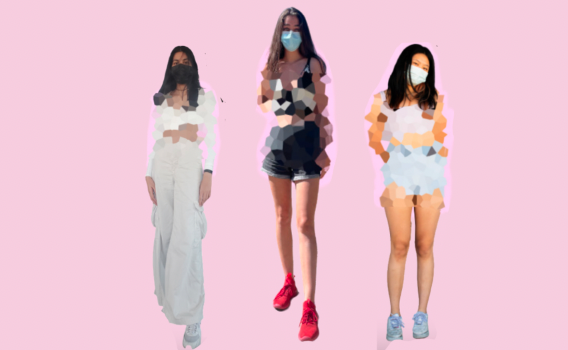Public high school dress codes are out of style

Graphic illustration by Ria Phelan
Dress codes promote an outdated agenda, disturbing progress in individualism and feminism.
October 6, 2021
The sexual revolution of the 1900s has impacted the perception of modesty regarding what women wear. Even today, women still face restrictions based on obsolete ideals. At Lynbrook, dress codes aim to promote “proper” attire for school but instead oppress creative expression, discriminate against different body types and contain biases that reinforce rape culture.
Whether it be following the latest trends or designing their own clothes, allowing students to wear what they are most comfortable in is an important for self-expression. Students in high school are capable of exercising sound judgments regarding their choice of clothing.
Oftentimes, women are asked to toss on sweatshirts over “revealing” or “distracting” clothing, which unfairly sexualizes and objectifies them in a way that men do not experience. Labeling certain types of clothes as distracting only damages girls’ self-image and projects the blame on them rather than on those who choose to be distracted.
Since the beginning of the 2021-22 school year, many girls have been asked to change due to an exposed midriff or low cut shirt, neither of which were distracting or inappropriate according to students. If dress codes aim to minimize distractions, then students’ opinions on what is or is not distracting should outweigh the administrations’.
“These dress code violations seem to be a bit overreaching,” junior Shyon Ganguly said. “Of course you can’t have people showing up naked to school, but it seems like the administration is overregulating what people can and can’t wear.”
On her way to class, one student was stopped by a teacher and asked to cover up. The teacher waited to see her put on a jacket.
“A teacher stopped me the other day and said my outfit was ‘inappropriate for school,’” senior Radhika Mehta said. “I honestly believe that if I had asked any guy that day if my outfit was inappropriate or distracting, they wouldn’t care.”
East Side Union High School District relaxed their dress code this year. Aiming to follow movements such as #MeToo, ESUHSD updated and reduced their dress code.
ESUHSD stopped labeling clothes as “revealing,” and instead focused on stopping graphic images, drug references and strapless tops. An ESUHSD teacher confirmed that the only rationale behind banning strapless tops is to prevent others from pulling down girls’ shirts. Otherwise, students are free to dress as they wish.
“The mentality that women are responsible for if men perceive them as a distraction — or so appealing that they can’t maintain focus or control themselves — is just another way that a rape culture is maintained,” Evergreen Valley High School teacher Melissa Marfia-Roza said.
Dress codes inherently encourage women to cover up anything that could be perceived as sexual. Schools reinforcing this idea leads to self-image issues and places unnecessary blame on women, which can become a problem in the future. By measuring the appropriateness of a woman’s outfit based on how her clothes affect those around her, dress codes contribute to the idea that wearing a certain outfit means she is “asking for it.”
“Every time a young girl hears how she’s dressed and how that makes others feel, it starts an internal monologue about what could I have done if something happened,” Marfia-Roza said.
Trusting a group of high schooler can be intimidating to administrators, but students at many schools, have proven that they do not need a restrictive dress code. Students at EVHS can now express themselves more creatively without fearing punishment.
“Since the dress code was removed, there have been a few shorter tops, but I don’t walk around campus and feel shocked at the tightness or shortness of what students choose to wear,” Marfia-Roza said. “Students have been making good decisions.”
Currently, Lynbrook does not allow clothing that is “too short or too revealing,” and an administrator is authorized to speak to students who choose to wear clothing that falls into this subjective range. There is no quantifiable measure for these standards, meaning a student’s outfit can be deemed inappropriate solely by a staff member’s judgement.
However, the solution is not to enforce specific measurements that discriminate against people of different body types. Students have expressed that those with similar outfits to themselves, but of different body types, could be either more or less likely to get dress coded. Clothes fit everyone differently, so body type can determine how much of someone’s body is showing.
The trust that the ESUHSD administration has applied should be reflected in schools everywhere. An exposed midriff should not be considered inappropriate or constitute a change in attire for students at Lynbrook. Lynbrook students are capable of making their own judgments when choosing what to wear and should not be sexualized for their clothing.
To combat these outdated views and reevaluate the image of women in society, schools should remove dress codes. Instead of blaming women and men for what they choose to wear, we must focus on getting to the root of problems that stem from perceptions of gender roles and outdated ideas of what is appropriate.


































































